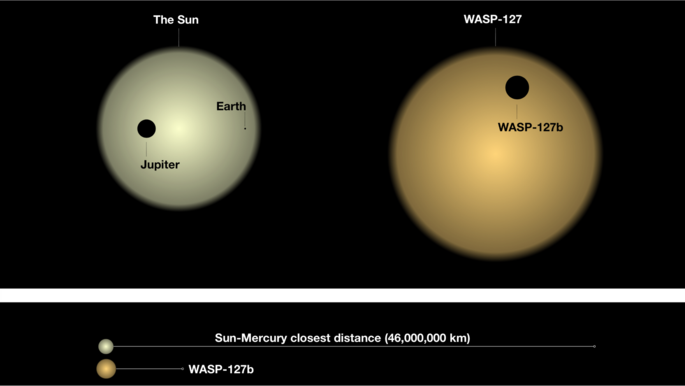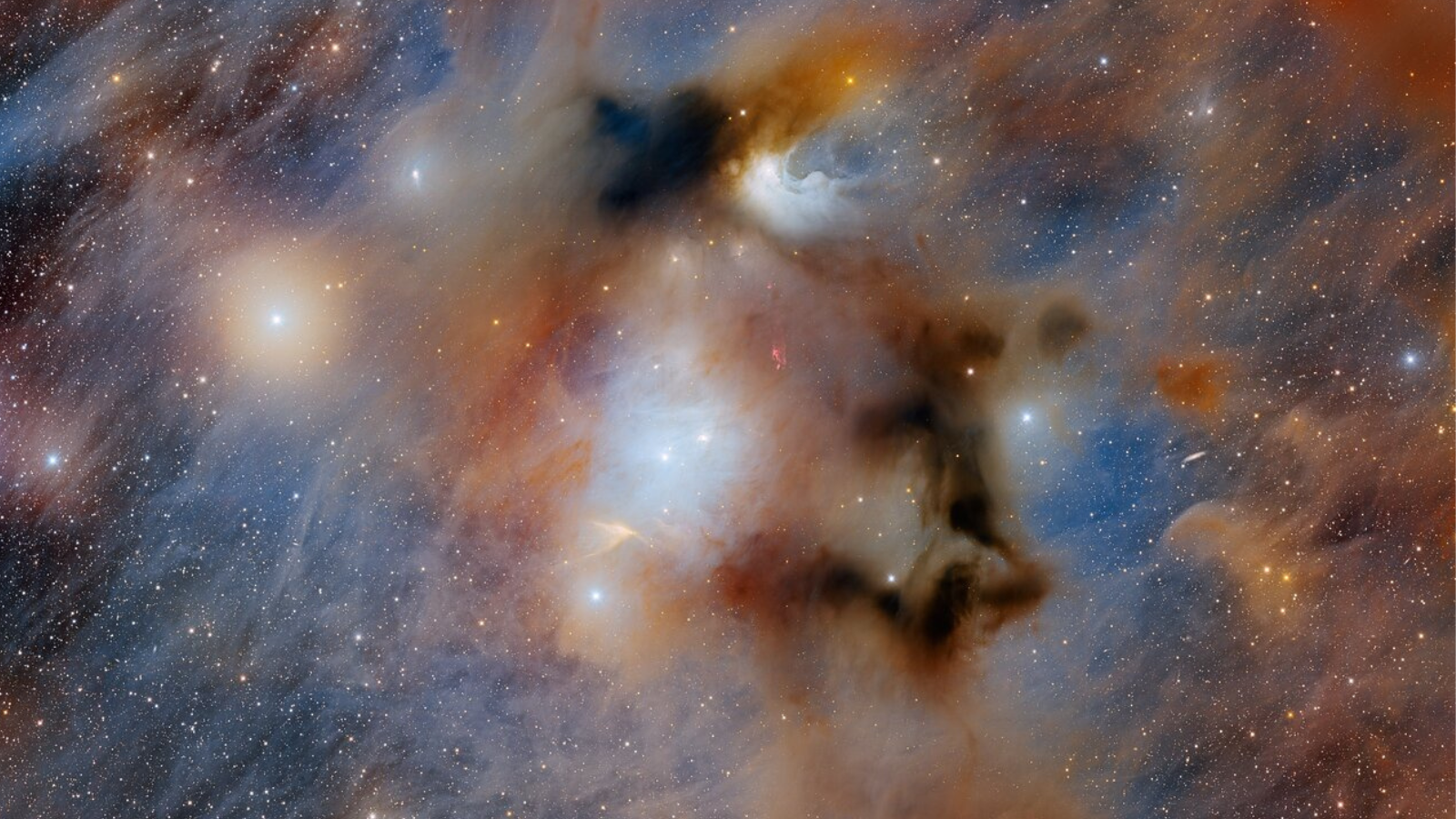Astronomers reveal strange clouds on 'fluffy' alien planet WASP-127b
WASP-127b keeps getting weirder.

The atmosphere of an alien planet called WASP-127b has been observed in greater detail than ever before, surprising scientists taking a close look at the exoplanet.
First, when probing different regions of WASP-127b’s atmosphere scientists detected sodium. Normally, the presence of this element would not come as much of a surprise in such an alien planet, but the element was found at a much lower altitude than expected, according to study leader Romain Allart, iREx/Université de Montréal and Université de Genève.
That wasn’t the only surprise. Scientists also observed strange water vapor signals that were strong in the infrared but non-existent at visible wavelengths. "This implies that water-vapor at lower levels is being screened by clouds that are opaque at visible wavelengths but transparent in the infrared," Allart said in a statement.
Related: These 10 super extreme exoplanets are out of this world
The results of the study, originally published Dec. 16 in the journal Astronomy and Astrophysics, were unveiled Sept. 23 by study leader Romain Allart at the 2021 meeting of the Europlanet Science Congress, an annual meeting place of the Europlanet Society and the largest planetary science meeting in Europe.
The researchers were able to investigate the different regions of WASP-127b's atmosphere by using data from the Hubble Space Telescope and visible light measurements from the ESPRESSO Spectrograph at the European Observatory's Very Large Telescope in Chile.
Using the combined data, the researchers narrowed down the altitude of clouds to an atmospheric layer with a pressure ranging between 0.3 and 0.5 millibars. Though what these clouds are made of remains a mystery.
Get the Space.com Newsletter
Breaking space news, the latest updates on rocket launches, skywatching events and more!
"We don't yet know the composition of the clouds, except that they are not composed of water droplets like on Earth," Allart said. "We are also puzzled about why the sodium is found in an unexpected place on this planet."
WASP-127b possesses many unique characteristics, so perhaps it comes as no surprise that the strange planet is raising so many questions.

Discovered in 2016, WASP-127b is considered to be a 'hot Saturn' — a gas planet similar in mass to Saturn but orbits far closer to its sun. According to the researchers, the exoplanet is found more than 525 light-years away and completes an orbit of its parent star in about four Earth days. During its orbit, WASP-127b receives 600 times more irradiation than Earth causing temperatures on the alien world to reach 2,012 degrees Fahrenheit (1,100 degrees Celsius).
These sweltering conditions puff WASP-127b up so much that it's 1.3 times the size of Jupiter, but just one-fifth of the mass. As such, WASP-127b is considered one of the 'fluffiest' (or least dense) exoplanets ever discovered, according to the researchers.
With regards to its orbit, the exoplanet is unlike any planet in our solar system. Using data from the ESPRESSO instrument, the researchers also suggest that WASP-127b not only orbits in the opposite direction than its star but also orbits in a different plane than the equatorial one. This could be an indication that WASP-127b is not alone.
"Such alignment is unexpected for a hot Saturn in an old stellar system and might be caused by an unknown companion," Allart said in the statement.
According to the researchers, WASP-127b is a fascinating place and will be very intensely studied in the future. The study highlighted the importance of combining space- and ground-based data and could pave the way for similar studies of distant worlds.
The research was first described in a study published Dec. 16, 2020, in the journal Astronomy and Astrophysics and was presented at the Europlanet Science Congress (EPSC) 2021 on Sept. 23.
You can follow Daisy Dobrijevic on Twitter at @DaisyDobrijevic. Follow us on Twitter @Spacedotcom and on Facebook.
Join our Space Forums to keep talking space on the latest missions, night sky and more! And if you have a news tip, correction or comment, let us know at: community@space.com.

Daisy Dobrijevic joined Space.com in February 2022 having previously worked for our sister publication All About Space magazine as a staff writer. Before joining us, Daisy completed an editorial internship with the BBC Sky at Night Magazine and worked at the National Space Centre in Leicester, U.K., where she enjoyed communicating space science to the public. In 2021, Daisy completed a PhD in plant physiology and also holds a Master's in Environmental Science, she is currently based in Nottingham, U.K. Daisy is passionate about all things space, with a penchant for solar activity and space weather. She has a strong interest in astrotourism and loves nothing more than a good northern lights chase!
